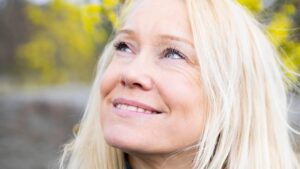
More Australians die of dementia than any other cause, according to a recent report by the Australian Institute of Health and Welfare. It is well known that physical activity is one way to reduce the risk of developing the disorder. Now, a new study has found a link between exercise and a reduction in a protein in the blood, which can lead to dementia.
The recently published paper by the Wicking Dementia Research and Education Centre at the University of Tasmania has also found that the more vigorous the exercise, the more brain health is protected. This development comes as a significant breakthrough in understanding how lifestyle choices can impact long-term cognitive health.
Protein Linked with Brain Inflammation Reduced by Exercise
The study tapped into a large and willing group of participants through the ISLAND research project in Tasmania. The project aims to understand who is most likely to develop dementia and ways to reduce that risk. Participants give a blood sample every two years and also complete surveys about their lifestyle.
Colleen Davidson, a 53-year-old participant, runs, swims, and does weight training. She is well aware that physical activity is one way to reduce her chances of developing dementia later in life. “I’m working towards where I need to be, and I think that’s positive — just taking one step at a time and trying to make those positive changes,” she said.
For the first time, scientists have been able to look at what impact reported levels of physical activity have on levels of a protein in the blood called serum glial fibrillary acidic protein or GFAP. Wicking Centre director, Professor James Vickers, said GFAP was linked with brain inflammation.
“So it’s a good marker for general brain health,” he said.
The reduction in the protein is even greater for participants who engage in more vigorous forms of exercise. Dr. Roccati explained,
“Things like running or swimming, things that make you puff and pant,”
which are particularly effective.
Genetics and Their Impact
Meanwhile, the association between vigorous exercise and a reduction in the GFAP protein was less strong in participants with the ApoE4 gene. About 25 percent of people carry one copy of ApoE4, and 2 to 3 percent of people carry two copies. ApoE4 is the strongest genetic risk factor for Alzheimer’s disease and dementia. Although inheriting the gene does not mean a person will develop the disease, it does increase the likelihood.
Actor Chris Hemsworth discovered three years ago he had inherited the gene from both his parents. Dr. Roccati emphasized that even though the reduction in the protein was not as strong for people with the gene, physical exercise remained crucial.
“You shouldn’t look at genes as determining your fate [you] should be like, ‘I’ve got this gene and now I am going to look at the best risk factors for me to address so I can reduce my risk of dementia over time,'” he said.
Other Ways to Reduce Risk
The new study adds to growing evidence that around 45 percent of dementia cases could be prevented by addressing modifiable lifestyle and behavioral risk factors. Addressing physical inactivity, a key midlife modifiable risk factor, could significantly reduce dementia cases. According to the Australian Institute of Health and Welfare report, by 2065, almost 1.1 million people are predicted to have dementia, a 2.5-fold increase.
Professor Vickers noted there were about 14 modifiable risk factors.
Social interaction, good sleep, and reducing blood pressure are some of the ways to reduce dementia risk.
High cholesterol, hearing loss, obesity, and smoking increase the likelihood of developing the disease. Professor Vickers said having a greater understanding of how modifiable risk factors influence blood biomarkers could help predict future brain health.
This development follows a broader trend of research focusing on preventative health measures. As the population ages, understanding and mitigating the risks of dementia through lifestyle changes could have profound implications for public health policy and individual well-being.







